Monstera obliqua is a rare and highly sought-after tropical plant that is native to Central and South America. It is a member of the Araceae family, which also includes philodendrons, pothos, and peace lilies. Monstera obliqua (Peruvian) is characterized by its large, perforated leaves that are often described as having more empty space than leaves.

The leaves are typically green but can also be variegated with yellow or white. Monstera obliqua is a slow-growing plant, but it can eventually reach a height of 6-10 feet. It is a relatively easy plant to care for but requires bright, indirect light and high humidity.
Monstera obliqua is a beautiful and unique plant that will add a touch of tropical flair to your house plant collection.
What is a Monstera Obliqua Plant?
The Monstera obliqua is a Central and South American native plant that is very popular with high-end plant collectors but despite its popularity, Monstera obliqua can be challenging to find. It is often mislabeled and confused with a similar-looking plant, Monstera adansonii.
There are four main types of Monstera obliqua:
- Monstera Obliqua Peru (fenestrated)
- Monstera Obliqua Bolivia
- Monstera Obliqua Suriname
- Monstera Obliqua Panama
The leaves of the Obliqua can vary in size and shape, and some specimens may not have any holes or fenestrations. The Peruvian Obliqua is known to have the most prominent fenestrations as it is often thought to “have more holes than leaf”.
Monstera Obliqua Peru is known for its unique appearance, featuring small and supple leaves with large, irregularly shaped holes that give it the appearance of Swiss cheese. The leaves are typically green, but some varieties have white or yellow variegation, making it more of a challenge to identify than other Monstera species.
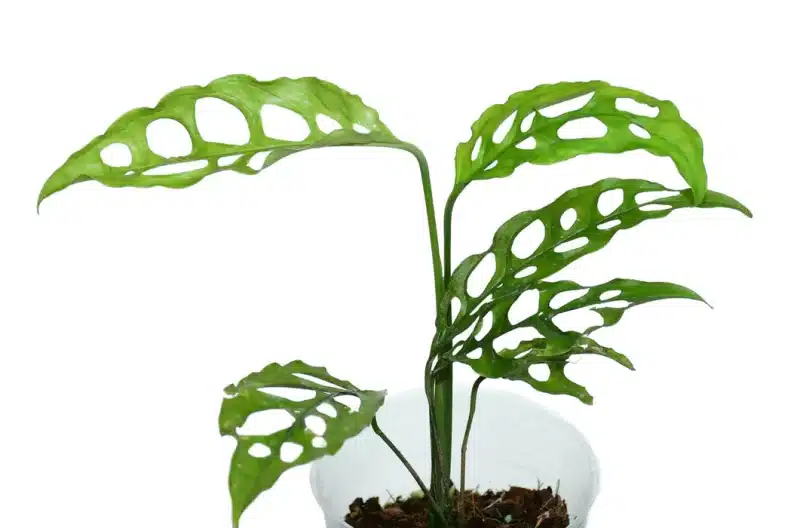
Monstera obliqua is a hemi-epiphyte tropical plant that germinates in the canopy. Finding this plant in the wild is almost impossible now due to its popularity and rarity as well as the loss of its native habitat.
Due to its high humidity needs this plant is definitely not a beginner's plant, a greenhouse or conservatory setting might be the only possible way to grow this plant effectively.
Side note: Be careful when purchasing the Obliqua, it is a very expensive plant to buy, and if you are finding one that isn't priced like a diamond you are probably buying a Monstera Adansonii or other Monstera. A Peruvian Monstera obliqua can fetch a price in the thousands of dollars.
Basic Features of Monstera Obliqua:
| Common Name: | Mexican Breadfruit, Swiss Cheese Vine/Plant, and Window-Leaf. |
| Botanical Name: | Monstera obliqua |
| Plant Type: | Tropical hemiepiphyte, climbing vine/plant |
| Size: | Leaves 6-7 inches long |
| Light: | Bright and indirect |
| Soil: | Well-draining, pH level is 5 to 7.5. |
| Water: | 1-2 times per week |
| Vulnerabilities: | Root rot, leaf issues |
| USDA Growing Zones: | 9b – 11 |
How to Care for and Grow Monstera Obliqua
Monstera obliqua can be a challenging plant to care for due to its high humidity requirements and sensitivity to overwatering. However, with the right growing conditions and care, it can thrive as a beautiful houseplant.
Soil Guide
Monstera obliqua prefers a well-draining, airy potting mix that is rich in organic matter. A good potting mix for Monstera obliqua would be a mix of peat moss, perlite, and orchid bark. The soil should be kept moist but not soggy. Overwatering can lead to root rot.
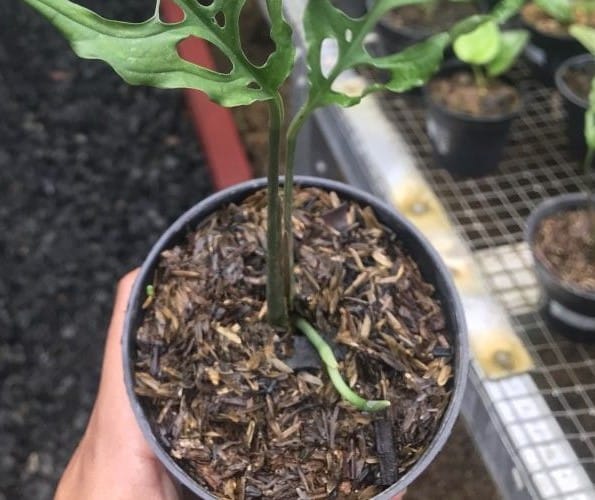
Watering Needs
Monstera obliqua likes to be kept moist, but not soggy. Water the plant regularly, but allow the soil to dry out slightly between waterings. A good way to check if the plant needs water is to stick your finger into the soil. If the top inch of the soil is dry, then it is time to water the plant.
It is also important to mist the leaves of Monstera obliqua regularly, especially if you live in a dry climate. This will help to increase humidity levels and prevent the leaves from drying out.
Lighting Needs
Monstera obliqua prefers bright, indirect light. Direct sunlight can scorch the leaves, so it is important to place the plant in a spot where it's not going to be in direct sunlight. A good spot for Monstera obliqua would be near an east- or west-facing window.

Temperature & Humidity Needs
Monstera obliqua prefers warm temperatures between 65-85°F (18-29°C), with humidity levels between 70-100%. It is important to maintain high humidity levels to prevent the leaves from drying out and becoming crispy.
If the air is too dry, you can use a humidifier or place a tray filled with pebbles and water under the pot to increase humidity. In addition, avoid placing the plant in a drafty area or near air conditioning or heating vents.
A greenhouse would be an ideal location for these rare Monsteras.
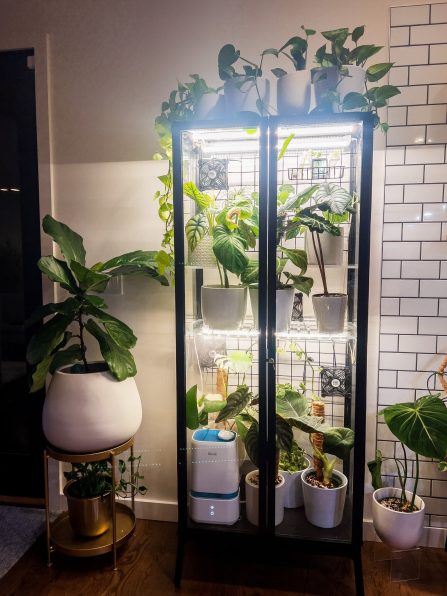
Fertilizing the Plant
Monstera obliqua requires regular fertilization during the growing season to maintain healthy growth. Use a balanced, water-soluble fertilizer every two weeks from spring through fall. In winter, reduce the frequency to once a month as growth slows down during this time.
Over-fertilization can cause leaf burn or even kill the plant, so be careful not to apply too much fertilizer. Dilute the fertilizer to half-strength and avoid applying it to dry soil, as this can also cause damage.
Pruning the Plant
To prune Monstera obliqua, you can start by inspecting the plant for any long or leggy stems that may be detracting from its overall appearance. Using clean, sharp pruning shears, make clean cuts just above a node or leaf to encourage new growth.
You can remove any dead or yellowing leaves as they occur. This not only keeps the plant looking healthy, but it also helps to prevent the spread of disease or pests.
How to Propagate Monstera Obliqua
There are two known ways to propagate the Monstera obliqua. By stolons and by cuttings.
Stolons are horizontal stems that grow along the soil surface, and Monstera obliqua can produce nubs along these stolons that can be used for propagation.
To propagate using stolons, you can try rooting each section of the stolon while it's still attached to the mother plant. Apply sphagnum moss or soil directly on or under each of the nub sections and keep the area humid for about 3 to 4 weeks. Roots should begin to grow from each nub, and once they're well-rooted, you can cut off each section of the stolon and continue growing it in sphagnum moss.
Alternatively, you can also cut off the stolon sections earlier before they start to root and propagate them in water or in soil. Just make sure to keep the area humid and to provide enough moisture to encourage root growth.
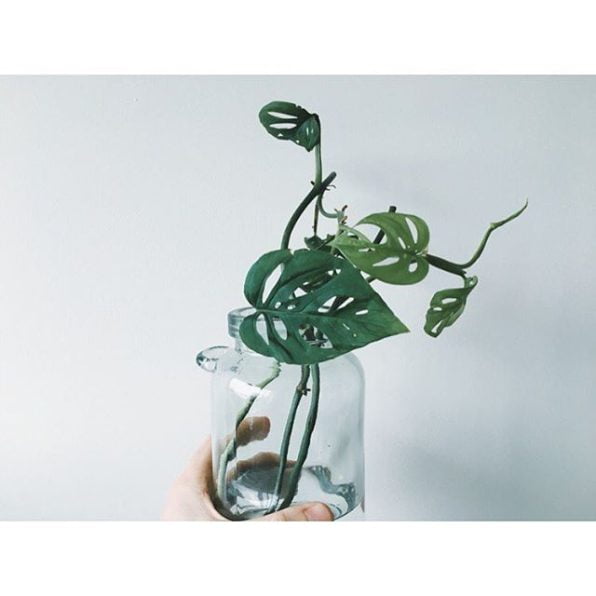
Another way to propagate Monstera obliqua is by taking a cutting that includes a leaf and a node.
Nodes are small, bump-like structures found on the stem of the plant where leaves and branches grow from. They contain meristem cells that can differentiate into new roots or shoots. When taking a cutting, it's important to include at least one node so that it can produce new roots and grow into a new plant.
To propagate using this method, take a cutting with a sharp, clean pair of scissors or pruning shears. Cut just below a node and make sure to include at least one leaf. Dip the cut end of the cutting in rooting hormone, if desired, and then plant it in a pot with moist soil or in water.
Keep the cutting in a warm, humid location with bright, indirect light, and be patient as it may take several weeks or even months for roots to develop. Once the roots have formed and the cutting has started to grow, you can transplant it to a larger pot and care for it as you would a mature Monstera obliqua plant.
Similar Monstera Obliqua Varieties
Monstera obliqua is a rare and sought-after plant that is prized for its delicate leaves with large holes. However, it is also a very finicky plant that can be difficult to care for. If you are looking for a similar plant that is easier to care for, here are a few options:
Monstera adansonii: This plant is also known as the Swiss cheese plant and has similar leaves to Monstera obliqua, but they are not as delicate and are less likely to tear. Monstera adansonii is also more tolerant of a wider range of conditions, making it a better choice for beginners.

Monstera deliciosa: This plant is the most common type of Monstera and is known for its large, heart-shaped leaves with holes. Monstera deliciosa is a bit more demanding than Monstera adansonii, but it is still a relatively easy plant to care for.
Monstera siltepecana: This plant is also known as the Mexican breadfruit and has dark green leaves with a silvery sheen. Monstera siltepecana is a bit more difficult to find than the other Monstera varieties, but it is a beautiful and unique plant that is well worth the effort.
monstera-siltepecana.jpg
Rhaphidophora tetrasperma: Also known as Mini Monstera or Philodendron Ginny, this plant has a similar look to Monstera deliciosa, but with smaller leaves and a more compact growth habit. It's also easier to care for than the Monstera obliqua.
Epipremnum aureum: Also known as Pothos or Devil's Ivy, this is another popular houseplant that's easy to care for. It has heart-shaped leaves with a similar pattern of holes to Monstera obliqua, but with a different color and texture.
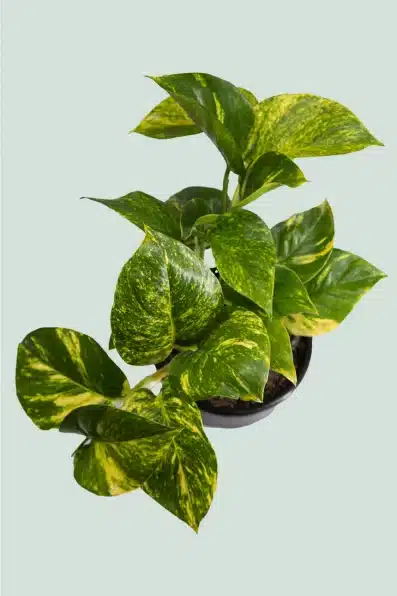
All of these plants share some similar traits with Monstera obliqua, such as the need for high humidity and indirect sunlight, as well as their distinctive fphioliage. However, they vary in size, growth habits, and ease of care, so it's important to choose the right plant for your space and skill level.
Common Monstera Obliqua Challenges
Monstera obliqua is a beautiful and unique plant, but it can also be challenging to care for. This section will discuss some of the most common challenges that Monstera obliqua collectors face.
Growing Challenges
Here are some of the most common growing issues that Monstera obliqua owners face:
- Overwatering: Monstera obliqua is susceptible to root rot, so it is important to avoid overwatering.
- Underwatering: Monstera obliqua can also suffer from underwatering.
- Not enough light: Monstera obliqua needs bright, indirect light.
- Not enough humidity: Monstera obliqua prefers high humidity levels.
Diseases
Root rot: Root rot is a fungal infection that can kill your plant. It is caused by overwatering and poor drainage. Symptoms of root rot include wilting leaves, yellowing leaves, and mushy roots.
Leaf spot: Leaf spot is a fungal infection that causes brown or black spots on the leaves. It is spread by splashing water. Symptoms of leaf spot include brown or black spots on the leaves.
Mosaic virus: Mosaic virus is a viral infection that can cause yellow, white, or green spots on the leaves. It is spread by insects. Symptoms of mosaic virus include yellow, white, or green spots on the leaves.
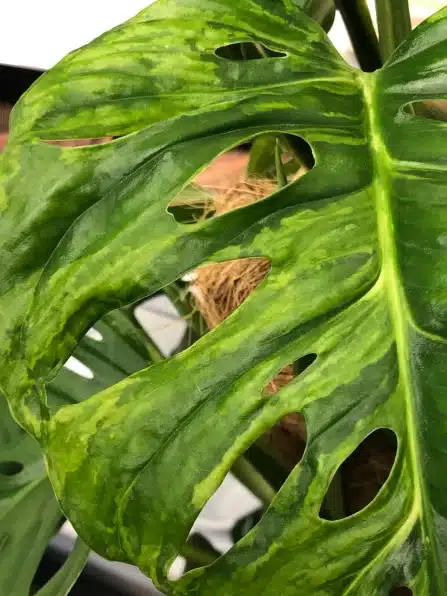
Pests
Spider mites: Spider mites are tiny insects that can cause webs on the leaves. They are spread by air currents. Symptoms of spider mites include yellowing leaves, stippling, and webbing on the leaves. If you think your plant has spider mites, it is important to wash the leaves with soap and water and to increase humidity.
Mealybugs: Mealybugs are small, white insects that can cause white, cottony masses on the leaves. They are spread by contact. Symptoms of mealybugs include white, cottony masses on the leaves. If you think your plant has mealybugs, it is important to remove the insects with a cotton swab dipped in rubbing alcohol.
Interesting Facts About the Monstera Obliqua
The name “Monstera” comes from the Latin word “monstrum,” which means “monster.” This name was given to the plant because of its unusual, exotic appearance.
monstera-obliqua-leaves.jpg
The Monstera obliqua once sold at an auction for $3700. This is not the highest price ever paid for one. A large plant once was purchased for $23,000.
FAQ’s
Is Monstera Obliqua toxic?
Yes, Monstera obliqua is toxic to humans and pets.
Monstera Obliqua vs Monstera Adansonii: What is the difference?
Price, leaf texture, and leaf structure are where you can find the differences in these two Monsteras.
Why is Monstera Obliqua so expensive?
The Monstera obliqua is expensive because of its rarity in nature, slow growth rates, and difficult propagation.
Where could I find a Monstera Obliqua for sale?
You can find these plants online, at auctions, and specialty plant shops. Be careful when buying these rare beauties.

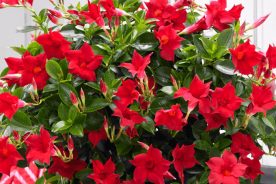
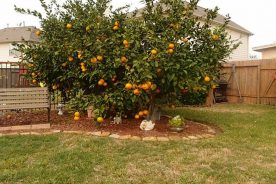
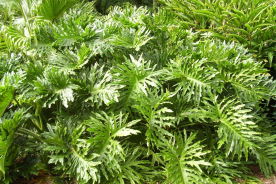

No Comments